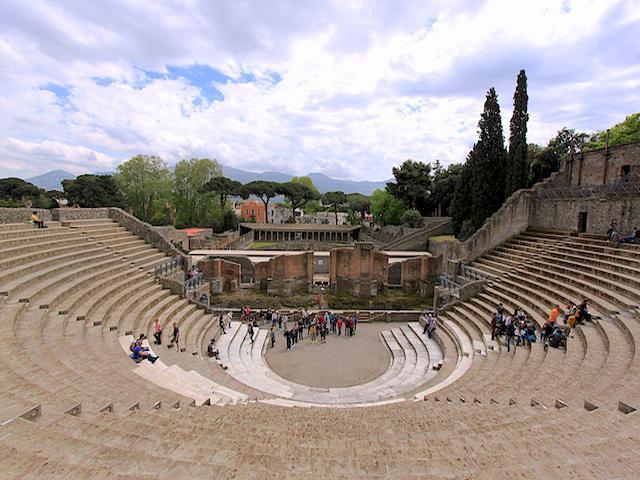Big theatre

The Great Theatre in Pompeii is a remarkable archaeological site that offers a glimpse into the ancient Roman world. Dating back to the end of the 3rd century BC, the theater underwent significant renovations during the Augustan period, thanks to the efforts of the Holconius brothers. The architect responsible for the renovations, Marcus Artorius Primus, left his mark on the building with inscriptions near the entrance to the orchestra. Divided into three main sections - the cavea, the orchestra, and the stage - the theater could accommodate up to 5,000 spectators.
The cavea, or seating area, is divided into three semicircular sections, with the lowest section (ima cavea) reserved for the municipal council members. The stage, although lower than typical Roman theaters, was designed to provide optimal viewing for the magistrates seated in the orchestra. The back wall of the stage, resembling the front of a palace, was adorned with columns and niches for statues, adding to the grandeur of the theater.
Visitors to the Great Theatre can explore the various levels of seating, imagining the bustling crowds that once filled the space during performances. The acoustics of the theater are still impressive, allowing visitors to experience the echoes of ancient voices and music. The surrounding landscape, with views of Mount Vesuvius in the distance, adds to the dramatic setting of the theater.
As one of the largest theaters in Pompeii, the Great Theatre played a significant role in the cultural and social life of the city. From theatrical performances to political gatherings, the theater was a hub of activity and entertainment. Today, visitors can walk in the footsteps of ancient Romans, marveling at the architectural ingenuity and artistic details that have survived for centuries.
In addition to its historical significance, the Great Theatre offers a unique opportunity to immerse oneself in the rich cultural heritage of Pompeii. With guided tours and informative displays, visitors can learn about the history of the theater and its importance in the ancient world. Whether you're a history buff, an architecture enthusiast, or simply curious about the past, the Great Theatre in Pompeii is a must-see destination for anyone interested in exploring the wonders of the ancient world.
© ChatGPT 3.5